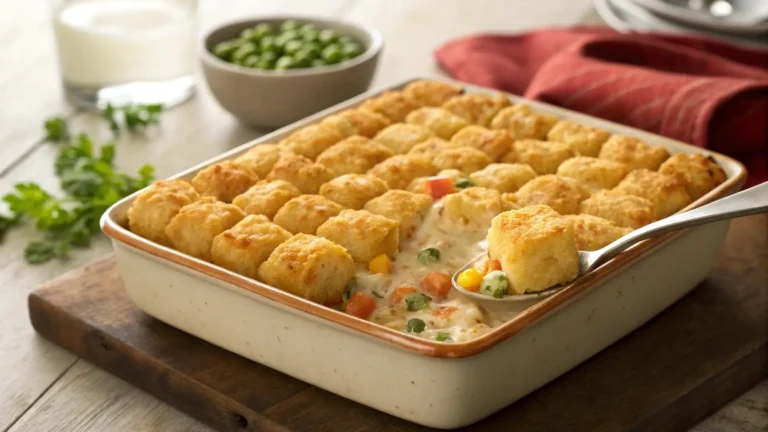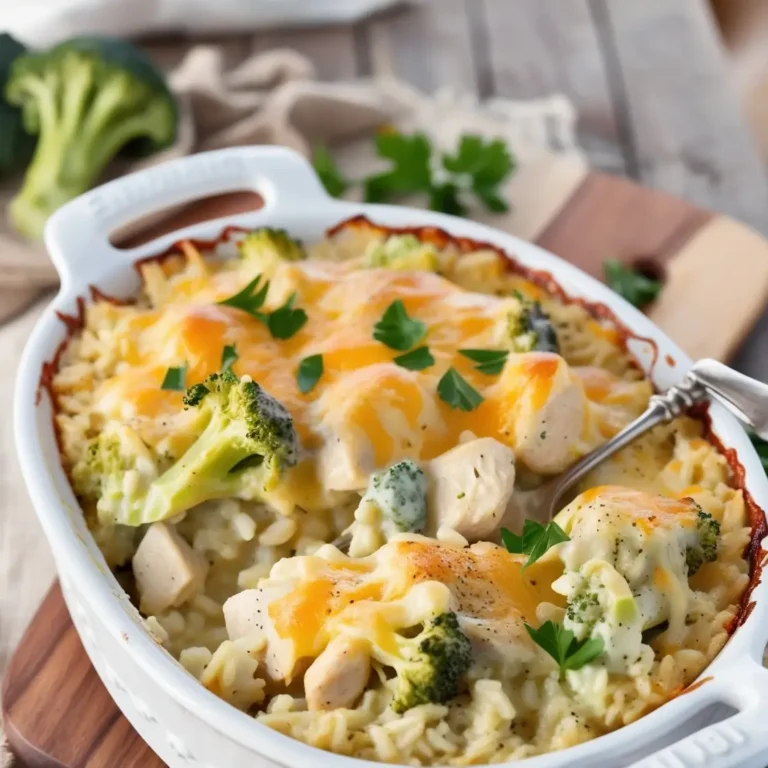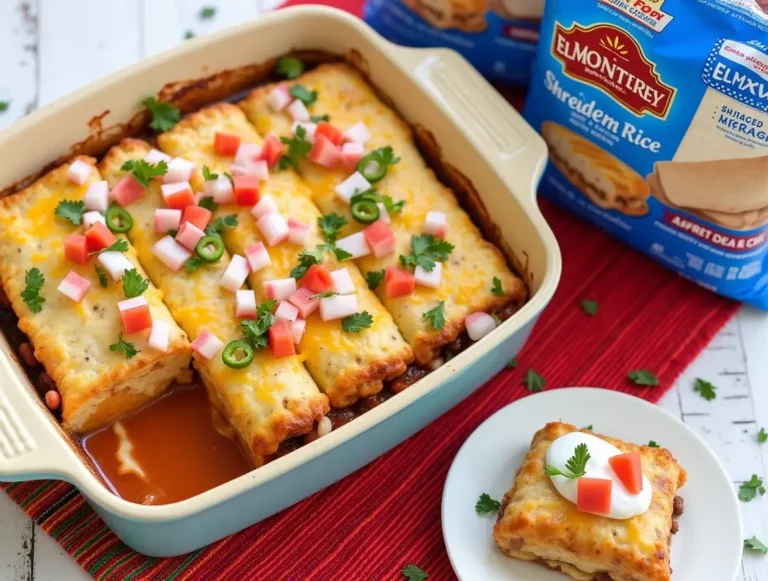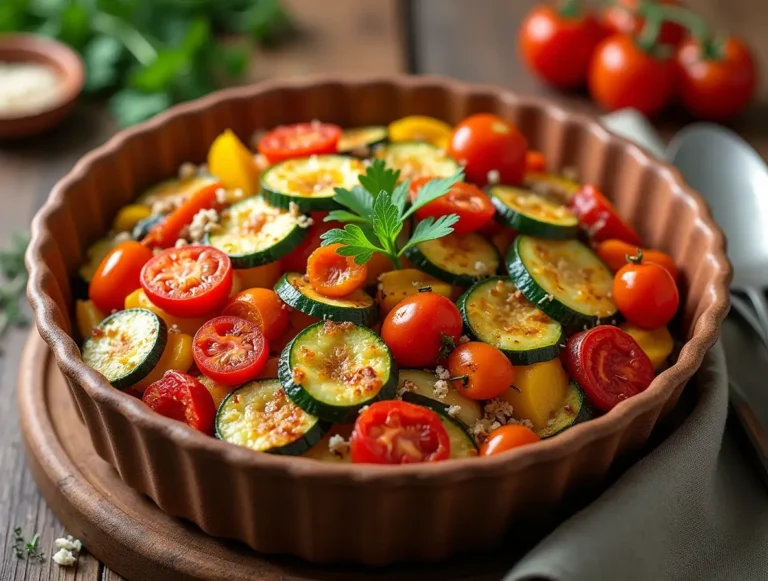Healthy Vegetable Casserole Recipes You Must Try
As a busy parent, finding quick, nutritious meals for the family can be tough. But, vegetable casseroles might be the answer. These dishes are easy to make and full of vitamins, minerals, and fiber. They’re key to a healthy diet.
In this article, you’ll find delicious vegetable casserole recipes. They’ll change how you see plant-based cooking. From a tasty Mexican enchilada bake to a cottage cheese and veggie mix, these meals are both healthy and tasty.
Table of Contents
Understanding the Benefits of Vegetable Casseroles
Vegetable casseroles are a tasty veggie comfort food choice. They also have many health and practical benefits. These wholesome meal prep dishes are full of important nutrients, making them great for your family.
Nutritional Value and Health Benefits
Vegetable casseroles are rich in vitamins, minerals, and fiber. They use a variety of colorful vegetables, giving your body lots of nutrients. The fiber in these low-calorie casseroles helps with digestion and weight management.
Weight Management Advantages
These casseroles are perfect for those trying to keep a healthy weight. The mix of low-calorie veggies and the filling nature of casseroles is great. The high-fiber recipes help you stay full longer, which can help with weight control.
Budget-Friendly Meal Solutions
Vegetable casseroles are also a smart choice for your wallet. They let you make big batches and use affordable ingredients. This makes them a smart pick for wholesome meal prep and family meals.
“Casseroles are a staple in many American households, valued for their ability to blend flavors, provide comfort, and serve as convenient one-pan meals.”
Vegetable casseroles bring many benefits to your kitchen. They are full of high-fiber recipes and low-calorie options. Plus, they’re easy on the wallet and offer a comforting, veggie comfort food experience.
Essential Ingredients for Perfect Vegetable Casseroles
Creating delicious clean eating casseroles or tasty meatless oven meals starts with the right ingredients. To make a great easy vegetable casserole, you need to choose carefully. This ensures your dish is both healthy and enjoyable.
The base of any good vegetable casserole is the vegetables. You can use fresh or frozen options like cauliflower, broccoli, zucchini, and bell peppers. These add color, texture, and important nutrients like vitamins, minerals, and fiber.
Adding whole grains like whole wheat pasta or quinoa makes the dish more filling. These ingredients bring complex carbs, protein, and more fiber.
| Ingredient | Purpose |
|---|---|
| Cauliflower, Broccoli, Zucchini, Bell Peppers | Provide essential vitamins, minerals, and fiber |
| Whole Wheat Pasta, Quinoa | Add heartiness and substance with complex carbohydrates, protein, and fiber |
| Beans, Cottage Cheese, Plant-Based Protein | Contribute a boost of protein for a well-balanced meal |
| Eggs, Yogurt, Cream-Based Soups | Serve as binding agents to create the perfect casserole texture |
| Thyme, Dill, Oregano, Parsley | Enhance the overall flavor profile of the dish |
Adding beans, cottage cheese, or plant-based proteins gives your casserole a protein boost. These ingredients make the dish more filling and balanced.
Binding agents like eggs, yogurt, or cream-based soups are key for the right texture. They help the casserole stay together and become creamy and comforting.
Finally, adding fresh herbs like thyme, dill, oregano, and parsley can really enhance the taste. These herbs add a fresh touch to your clean eating casseroles, meatless oven meals, and easy vegetable casserole creations.
“The key to a truly satisfying vegetable casserole lies in the perfect balance of fresh produce, whole grains, protein, and flavor-enhancing herbs and spices.”
Healthy Vegetable Casserole Recipes for Weight Loss
Looking to lose weight and enjoy tasty meals? These healthy vegetable casserole recipes are just what you need. They’re full of low-calorie veggies, high-quality protein, and whole grains. These casseroles will keep you full and help you reach your weight loss goals.
Low-Fat Zucchini and Mushroom Casserole
This casserole is a mix of spiralized zucchini, button mushrooms, and a light cottage cheese sauce. It’s creamy and comforting. Prep time is just 10 minutes, and it cooks in 25 minutes, making it a great weeknight meal.
Protein-Rich Cottage Cheese Vegetable Bake
This casserole combines cottage cheese, yogurt, and fresh veggies. It’s packed with protein and nutrients. It’s a satisfying and healthy meal that supports weight management.
Whole Wheat Pasta Vegetable Medley
Try this whole wheat pasta casserole for a heartier meal. It has whole grain pasta, seasonal veggies, and a light cheese topping. It’s flavorful, filling, and perfect for weight loss.
These casseroles are low in calories but rich in vitamins, minerals, and fiber. They support your health and weight loss journey. Enjoy them as part of a balanced diet and active lifestyle.
Mexican-Inspired Roasted Vegetable Enchilada Casserole
Try a delicious roasted vegetable casserole with a Mexican flavor. It has roasted cauliflower, sweet potato, bell peppers, and onions. These are mixed with corn tortillas, black beans, spinach, and salsa. It’s topped with Monterey Jack cheese for a tasty meal that’s good for vegan or gluten-free diets.
This vegan vegetable casserole is great because you can make it ahead. You can assemble the enchiladas and refrigerate them overnight or freeze for up to 3 months. It’s perfect for meal prep or saving leftovers. If you don’t have fresh veggies, frozen ones work too. Just roast them for 15-30 minutes.
For a vegan version, use shredded vegan cheese or vegan nacho cheese sauce on top. This adds flavor and creaminess. You can store leftover enchiladas in the fridge for up to 3 days or freeze for up to 3 months. This way, you can enjoy this gluten-free vegetable casserole for several meals.
| Nutritional Information (per serving) | Value |
|---|---|
| Calories | 401 |
| Carbohydrates | 72g |
| Protein | 16g |
| Fat | 7g |
| Fiber | 18g |
| Sugar | 5g |
“This Mexican-inspired roasted vegetable casserole is a flavorful, nutrient-dense meal that’s perfect for family dinners or meal prep.”

Seasonal Vegetable Casserole Combinations
Get creative with fresh, seasonal ingredients for tasty vegetable casseroles. Each season brings its own flavors, from spring’s bright colors to winter’s warm, hearty dishes. There’s a perfect casserole for every time of year.
Spring and Summer Options
When it’s warm outside, choose light, refreshing casseroles. Use asparagus, zucchini, tomatoes, and fresh herbs for a burst of flavor. These dishes are not only delicious but also full of nutrients.
Fall and Winter Varieties
In the cooler months, go for casseroles with root veggies, squash, and Brussels sprouts. These ingredients add warmth and nourishment to your meals. They’re ideal for cozy nights and offer a healthy, budget-friendly option.
Using local, in-season ingredients makes your casseroles taste better and saves money. Try new combinations and enjoy a variety of veggie casseroles all year round.
Tips for Perfect Casserole Preparation
Making a tasty easy vegetable casserole or healthy vegetable bake is simpler than you think. Just a few tips can make your casserole a hit every time. Let’s look at the secrets to making a great casserole:
- Pre-cook Harder Vegetables: Start by pre-cooking any harder vegetables, such as carrots, potatoes, or broccoli, to ensure they cook through evenly with the softer ingredients.
- Layer Ingredients Thoughtfully: Arrange your ingredients in layers, with heartier items on the bottom and more delicate ones on top. This helps create a balanced flavor and texture profile.
- Use the Right Liquid Amount: Add just the right amount of liquid, such as broth or cream, to prevent your casserole from becoming dry or overly soggy.
- Cover and Uncover: Cover the casserole during the initial baking to help retain moisture, then uncover towards the end to achieve a golden-brown, crispy top.
- Allow to Rest: Let your casserole rest for a few minutes before serving, as this makes it easier to portion and serve.
By following these simple tips, you’ll be well on your way to creating easy vegetable casserole and healthy vegetable bake dishes that are sure to impress. Enjoy the delicious results of your culinary efforts!

“The best part about this casserole is how easy it is to make. It’s a total hit with my family!”
– Sarah, Satisfied Casserole Enthusiast
Make-Ahead and Storage Guidelines
Preparing wholesome vegetable casseroles ahead of time can change your meal prep game. Most dishes can stay in the fridge for up to 3 days before baking. This lets you start your week’s meals early. Just pop it in the oven when you’re ready, and your kitchen will fill with amazing smells.
Freezing Instructions
For longer storage, freeze these casseroles for up to 3 months. Wrap the unbaked casserole in foil or use an airtight container. When you want to enjoy it, thaw it in the fridge overnight. Then, bake it until it’s hot and ready.
Reheating Methods
Reheating your homemade meals is easy. If it’s frozen or refrigerated, thaw it in the fridge overnight. Then, bake it until it’s hot and ready to eat.
Meal Prep Strategies
- Portion your casserole into individual containers for easy meals all week.
- Prepare ingredients ahead, but wait to add liquids until baking time. This saves time on busy nights.
- Try different veggies and flavors to keep your meals exciting and varied.
Learning to make and store vegetable casseroles can make your clean eating routine easier. You’ll enjoy home-cooked meals whenever you want.
Dietary Modifications and Substitutions
It’s easy to change vegetable casserole recipes for different diets. You can find vegan vegetable casserole and gluten-free vegetable casserole options. These changes make these dishes fit your lifestyle.
For vegan recipes, use plant-based cheese and milk like cashew cream or nutritional yeast. Tofu, tempeh, or legumes add protein and keep you full.
For gluten-free options, use quinoa, brown rice, or cauliflower rice instead of regular pasta. Lentils, chickpeas, and other legumes are great for adding fiber and nutrients.
Want to reduce carbs? Try using zucchini, eggplant, or broccoli instead of potatoes or squash. Use spices and herbs to make your dish flavorful.
Everyone can enjoy a delicious vegetable casserole, no matter their diet. Just use fresh, whole foods that are good for you. A little creativity can make any casserole fit your needs.
Serving Suggestions and Side Dishes
When you serve a comfort food vegetable casserole or a healthy vegetarian casserole, choose the right sides. This will make your meal even better. Here are some ideas to make your casserole stand out:
- Serve the casserole with a light, fresh side salad. It adds nutrients and balances the dish.
- Serve with crusty whole grain bread or rolls. They soak up the casserole sauce nicely.
- Roast seasonal vegetables like Brussels sprouts, sweet potatoes, or bell peppers. They add color and taste.
For more protein, grill or bake a lean chicken or fish. Serve it with your vegetable casserole. Add Greek yogurt, toasted nuts, or fresh herbs on top. This will boost the flavors and textures.
| Side Dish | Nutritional Benefits | How it Complements the Casserole |
|---|---|---|
| Tossed Green Salad | High in fiber, vitamins, and minerals | Provides a light, refreshing contrast to the casserole |
| Roasted Vegetables | Rich in antioxidants and phytochemicals | Enhances the vegetable-forward nature of the casserole |
| Whole Grain Bread | High in complex carbohydrates and fiber | Soaks up the flavors of the casserole and provides a satisfying texture |
| Grilled Chicken or Fish | Excellent source of lean protein | Adds a protein component to the meal for balanced nutrition |
By adding these sides to your comfort food vegetable casserole or healthy vegetarian casserole, you make a meal that’s both tasty and healthy. It will satisfy your hunger and support your health.
“The addition of a fresh, crunchy salad and some crusty bread really made the casserole feel like a complete and satisfying meal. I loved the combination of flavors and textures!”
Conclusion
Healthy vegetable casseroles are a great choice for family meals and meal prep. They offer endless ingredient combinations and can be adapted for different diets. These dishes make it easy to eat more veggies while enjoying tasty meals.
Adding these “healthy vegetable casserole recipes” to your cooking can help you make nutritious, affordable meals. These “nutritious oven dishes” are full of important nutrients. They also let you try out different flavors and ingredients, pleasing everyone’s taste buds.
Make these vegetable casseroles a regular part of your meals. They’re not only good for you but also fun to make. Try out new flavors and ingredients to create meals that are both healthy and delicious.
Top Reviews and Expert Insights on Casserole Recipes
There are no reviews yet. Be the first one to write one.
FAQ
What are the key benefits of vegetable casseroles?
Vegetable casseroles are packed with nutrients like vitamins and minerals. They help with weight management because they’re low in calories and high in fiber. Plus, they’re easy on your wallet, making meal planning a breeze.
What are some common ingredients used in vegetable casseroles?
Vegetable casseroles often include fresh or frozen veggies, whole grains like pasta or quinoa, and protein sources like beans or cottage cheese. Eggs, yogurt, or cream-based soups help bind everything together.
Can vegetable casseroles be adapted for different dietary needs?
Yes, you can make vegetable casseroles fit many diets. For vegans, gluten-free, or low-carb diets, just swap out ingredients as needed.
How can I prepare and store vegetable casseroles?
You can make most vegetable casseroles ahead of time and chill them for up to 3 days. For freezing, wrap them tightly and keep for 3 months. To reheat, thaw in the fridge overnight and bake until warm.
What are some tips for achieving the perfect vegetable casserole?
For a great casserole, pre-cook hard veggies first. Layer ingredients carefully and use the right amount of liquid. Cover it while baking and let it rest before serving.
What are some good side dish options to serve with vegetable casseroles?
Serve vegetable casseroles with light salads, whole grain bread, or roasted veggies. For extra protein, add grilled chicken or fish. Try them with tzatziki or salsa for extra flavor.







